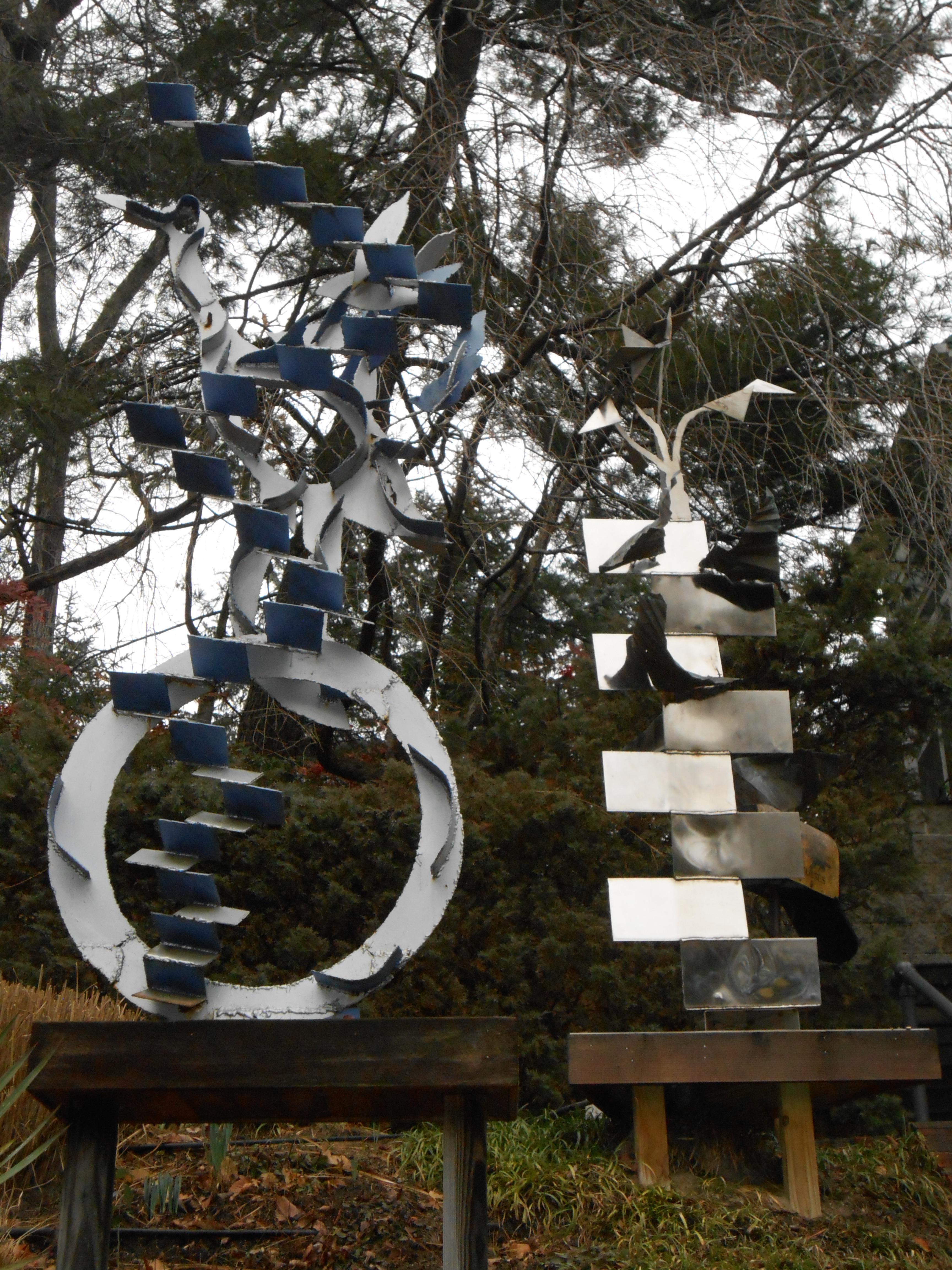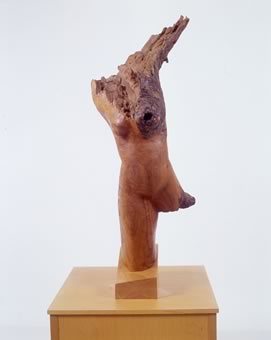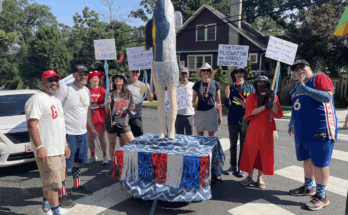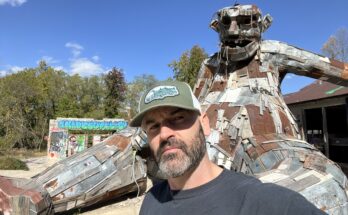On my drive to work each morning, I pass a house with several large metal sculptures in the front yard. Internet research helped lead me to the creator of those sculptures and the owner of the house, DC sculptor and painter Setsuko Ono. In addition to displaying her art in her front yard, Setsuko has shown her work in public spaces in Havana, Baltimore, and Japan. Recently, she graciously invited me into her home, answered my questions, and showed me her work.

Setsuko appears to be on the brink of a creative frenzy. Having retired a few years ago from a 30-year career at the World Bank, she is having a sky-light-filled, three-story studio built on to her house so that she can fully immerse herself in her art. As she talks, it is clear that her international perspective (she is a Japanese citizen, her husband is Italian, and both have traveled and worked all over the world) influences her daily observations and her art.
She began her training as an artist shortly after beginning her career in international development by taking night classes at The Corcoran College of Art and Design. For her, putting in long hours at the at the studio after a full work day wasn’t draining, but rather reenergizing. It helped her maintain energy in a job that could sometimes feel disheartening. She compares the frustrations from working in international development to her work as an artist by saying, “It’s like sculpting a stone. It has its own life. You are an outsider. You’re chiseling, trying to make a head. You make a very fine, delicate nose. Then, you hit the chisel again, and the nose falls off.”
Setsuko describes her progression in art as nontraditional, pointing out that she never had the network that many other artists find in MFA programs. For years, she simply created work without making efforts to show it. That changed in 2003 when she entered, and was accepted into the Havana Biennial, an international art show in Havana Cuba. Only when she arrived in Cuba ready to work, she was told she had no studio space and was also not allowed to secure large amounts of steel without special permission. Her solution was to begin working in a steel mill with the assistance of local steel workers. At first, she feared the workers wouldn’t understand her art and wouldn’t be able to make the fine, delicate cuts she needed. “You know, steel workers have a reputation for being pretty macho,” she says. However, contrary to this reputation, she found her new assistants to be cooperative and resourceful.
Upon returning to the United States, Setsuko underwent a similar process for creating several sculptures displayed in Baltimore’s Inner Harbor, completing the works with the help of Sparrow’s Point steel workers.

For several years, Setsuko made a switch from sculpture and focused on painting, feeling she really wanted to “master new techniques.” In the 2009, she produced several paintings for the Havana Biennial on the theme of resistance. In that series, she depicted the Spanish Civil War, the Jewish uprising in the Warsaw ghetto, and the struggle of Palestinian refugees after the Middle East War. On her website, Setsuko describes this work by saying “Perhaps it will help if we recognize that those who risk their lives to fight injustice, whether in the past or today, fight for one of the most sacred values of mankind.”
In 2010 and again in 2012, Setsuko was commissioned to do several steel sculptures, again cooperating with local mill workers, this time in Japan.
Much of Setsuko’s work can be seen on her website along with press clippings in English, Spanish, and Japanese. When asked what she wants to accomplish next as an artist, Setsuko humbly responds that she simple has a desire to hone her craft and to experience the “everyday excitement of a lot of creating.”

The art in her home reflects her varied style. Though it was the large, abstract metal sculptures in her front yard that caught my eye and which has brought her the most media attention, other work done in wood shows a much more delicate and realistic technique. In addition, Setsuko plans to continue to develop her skills as a painter. She even designed her own dining room table set, complete with modern, high-backed chairs. Though decades into her work as an artist, it is clear Setsuko’s work is continuing to grow and change.



